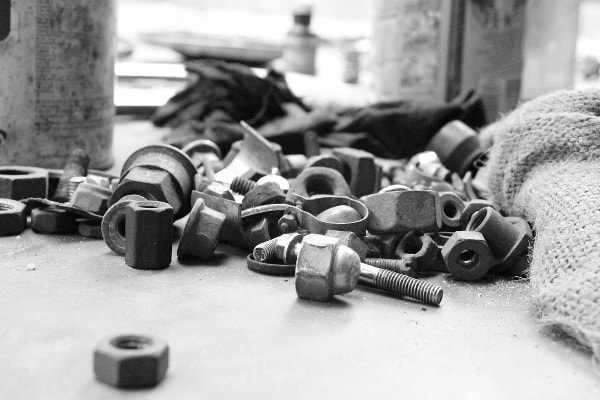Unfinished jobs If anything, unfinished jobs are probably the biggest culprits of extra clutter in the house. Yes: there will be a lot of dirt and dust, but all of this can be cleaned. What affects you much more is the knowledge that a job is not finished and will weigh on you until it is. When considered like this, an unfinished job is no different from that pile of paperwork you know is sitting somewhere in a drawer waiting for you to take care of it. The paperwork is nicely hidden away and can be ignored much easier, though, than a wall that needs to be plastered or a doorway that’s only closed by means of a curtain because the door is missing. Furthermore, unfinished DIY projects also have an effect on anyone else who happens to live there or be in the vicinity of this sad situation. Leftovers Remember, any DIY job leaves behind bits and bobs after the task has been finished. That could be bits of plasterboard, half-full buckets of paint, dirty tools, extra screws and nails, small quantities of plaster mix or wood filler… you name it, it leads to leftovers. It seems like a good idea to keep those for future projects, and there are lots of reasons why you should: you have paid good money for it, you can’t find the same thing any more, you wouldn’t want to be wasteful, you can’t get that same batch of wallpaper any more, etc. Most people will take all of this and shove it into the shed, or some kind of holding area where all the leftovers are placed to live a very sheltered life until such time that the lot is being chucked out. Let’s face it: most of those things will never come in handy, really! And if they could you’ll be hard put to find them again and give up after a short attempt at locating them. When it comes to leftover DIY stuff, the best rule of thumb is: “Resist the urge to keep things for potential future projects.” Not only is it going to be difficult to find things, but a lot of what is used for DIY actually does not keep forever. Similar to food items, many DIY things have a limited lifespan: paint goes off, especially if the container has been opened, plaster mix cakes up if not stored correctly (Have you ever placed these leftovers in an airtight container? Be honest!), tools need to be cleaned properly before going back into storage or they start to rust or otherwise degrade, fluids have to be kept in the right conditions (and often even at particular temperatures), wallpaper rolls get damp and discoloured, etc. Looking at this, chances are that you’ll never use those things ever again. So why even keep them in the first place? Keeping things that are missing bits or in need of repair If we expand that category of things that are unlikely to be used again in the future, that would encompass items in need of repair, that are stored only with the idea of eventually getting around to repairing them. How many broken chairs and items in need of a lick of paint can one have? A whole lot of them, in many cases! If you find that your loft, garage, garden shed or other storage space are clogged up with this kind of item, please ask yourself when you are reasonably likely to actually getting around and taking care of those. And that is without even considering the utility of those things: clearly you have lived without them for a while and not really missed them, or you would have fixed them by now! In all likelihood you have even bought a replacement item already for use instead of the broken item… The lesson here is simple: “Don’t hesitate to throw away any items that are no longer fully functional.” You might just be better off having a lot of more space at your disposal now, and – in the highly unlikely situation that you are actually in need of the item you let go years ago – you are probably better off getting a new and fully functional one, right? DIY is just a part of this equation, but it often is a huge culprit when it comes to things stored for eternity. There is good reason to keep another couple of terracotta tiles to replace any broken ones, but do you need a couple of boxes of the stuff, and couldn’t you make do with something similar when it becomes necessary? What about that stuff you vowed to fix 10 years ago and never did – is that really a proper use of your storage space and capacity to worry about it? Those items are closely entrenched in the zone of things “we keep just in case”. Just in case is rarely a good idea, it is usually a symptom of procrastination and the inability to take decisions. Look at this as a learning opportunity: those items are really not useful, so why keep them at all? If you have enjoyed reading this, you may find these other articles interesting: Comments are closed.
|
Ask the ClutterMeisterIdeas to help clear away the mess in your homes and in your minds.
Feel free to share any of my posts, but please put in a backlink to the original blog post. Thank you. The author
Hi, my name is Tilo Flache. My mission: help clients declutter mind and space.
This blog contains pointers for your journey towards a happier living experience. Archives
November 2023
|




 RSS Feed
RSS Feed




